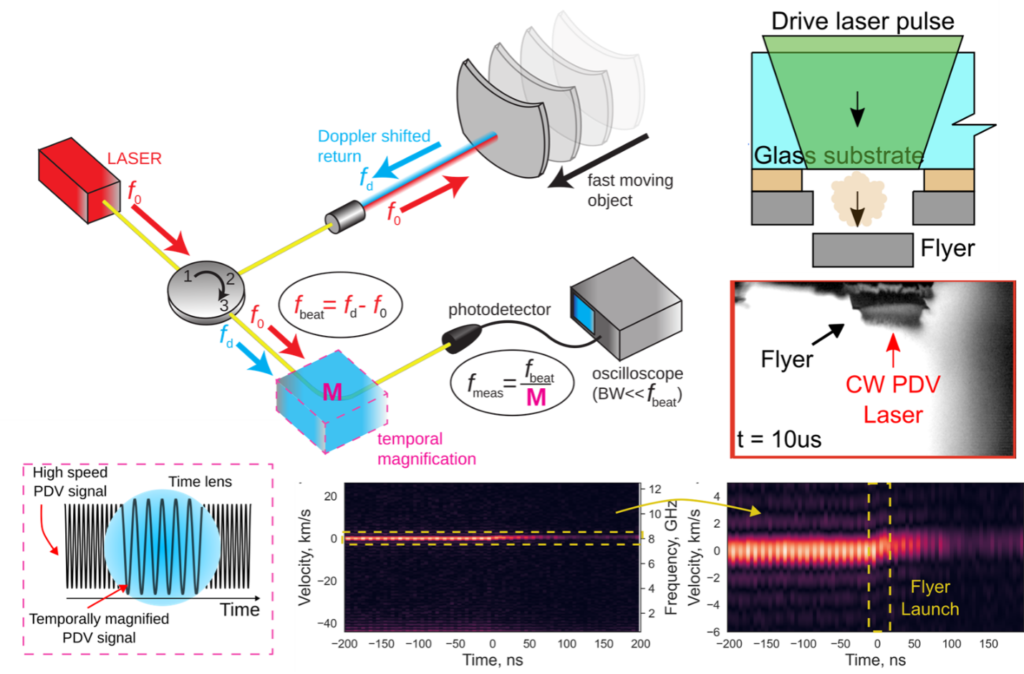MSEE researchers Velat Kilic (CCRI), Mark Foster (CCRI), and KT Ramesh (RA1-FA2) recently contributed to an article highlighting MSEE-supported work on Time Lens Photon Doppler Velocimetry for extreme measurements. The article was published in the prestigious Nature Communications journal.
From the article: “Capturing extreme surface velocities with >50 km/s dynamic range, which arise in shock physics such as inertial confinement fusion (ICF), is beyond the reach of conventional photon Doppler velocimetry (PDV) systems due to the need for extremely large electrical bandwidth under such conditions. The recent ignition in ICF calls for new velocimetry that can measure velocities exceeding 100 km/s. Time lens PDV (TL-PDV) is a solution where the high frequency beat signal from a conventional PDV system is periodically temporally magnified in the optical domain using a time lens. Here we experimentally demonstrate TL-PDV for the first time, validate the performance over a 74 km/s velocity range with high accuracy using a temporal magnification factor of 7.6, and verify excellent agreement with conventional PDV for laser driven micro-flyer experiments. TL-PDV currently provides the largest velocity dynamic range among PDV systems and is scalable to even higher velocities, which makes it an ideal candidate for material characterization under the most extreme conditions such as optimizing fuel efficiency in ICF experiments.”
This article highlights the novel and exciting diagnostics MSEE researchers utilize during high-speed shock physics experiments. VIEW THE FULL TEXT OF THE ARTICLE HERE.

